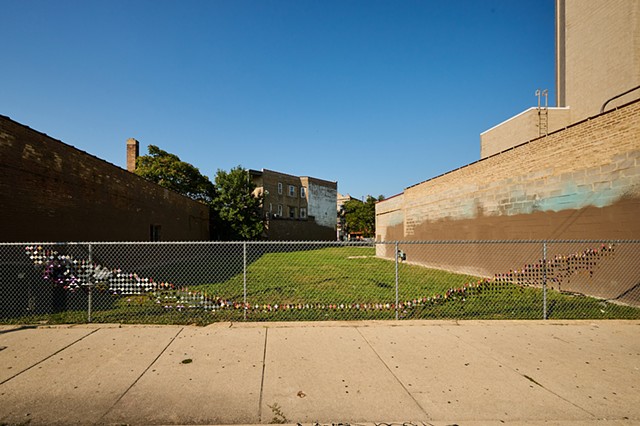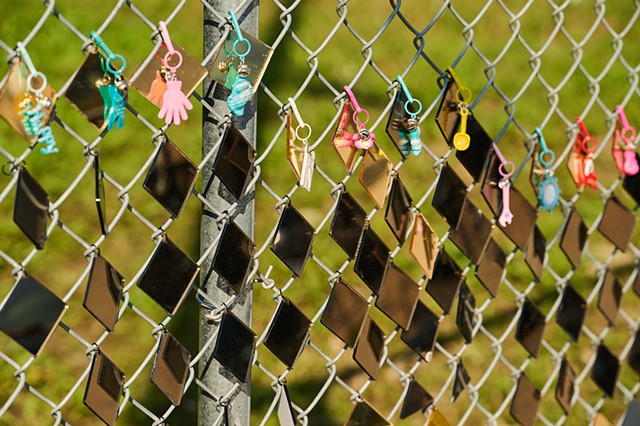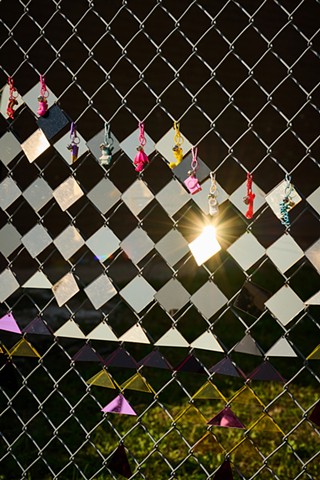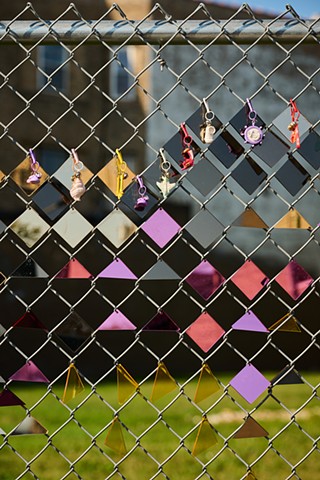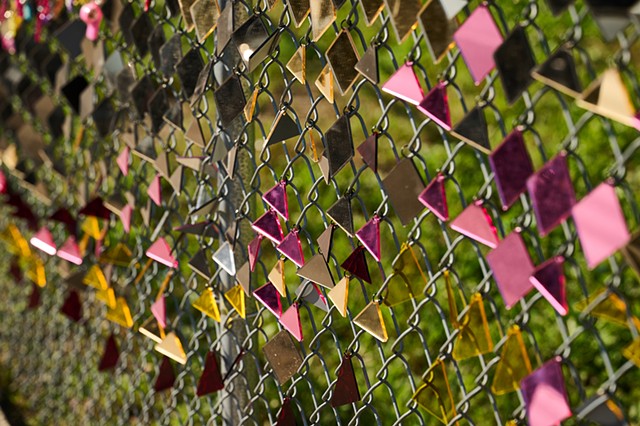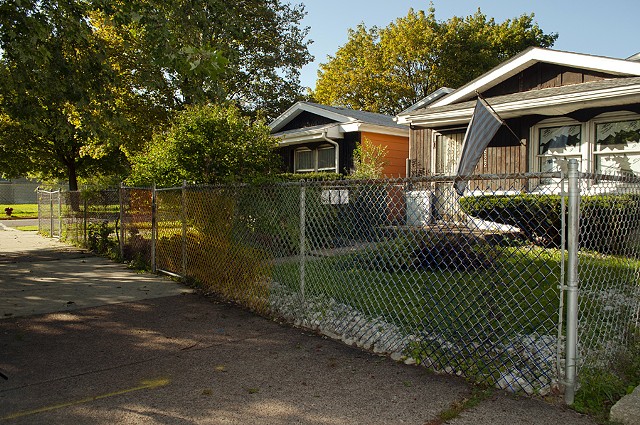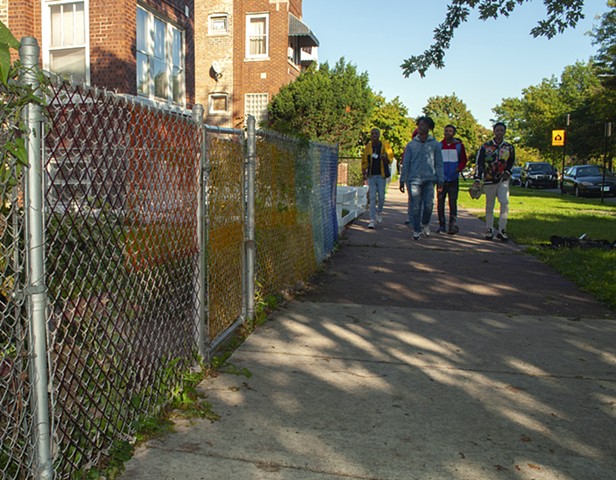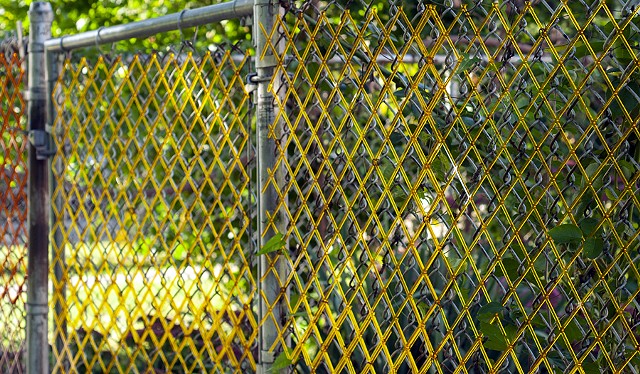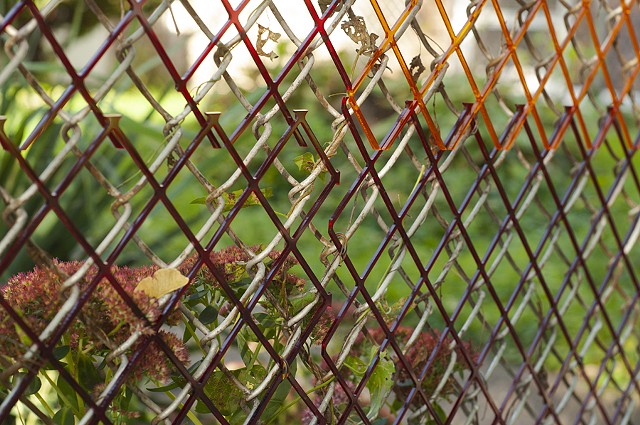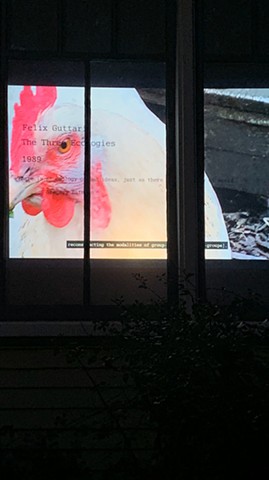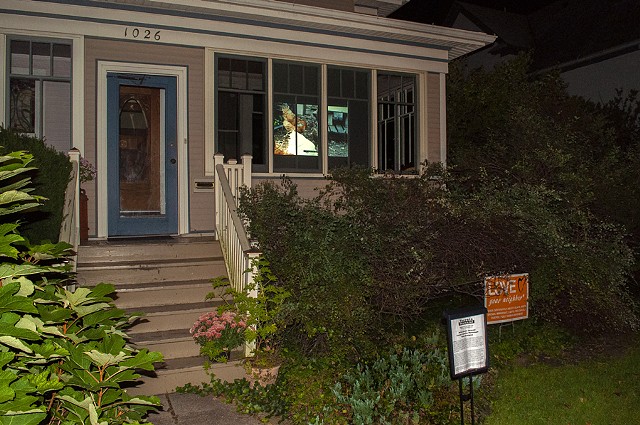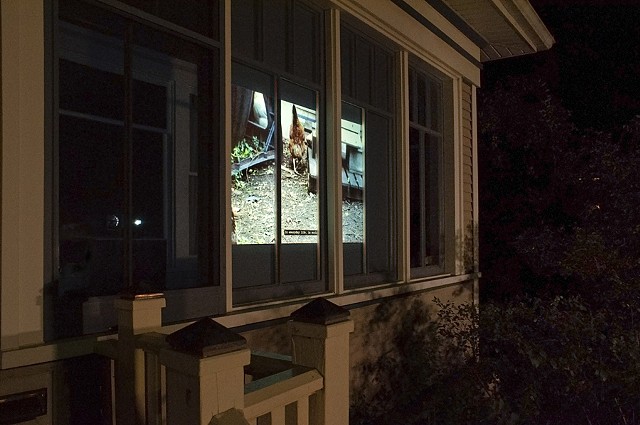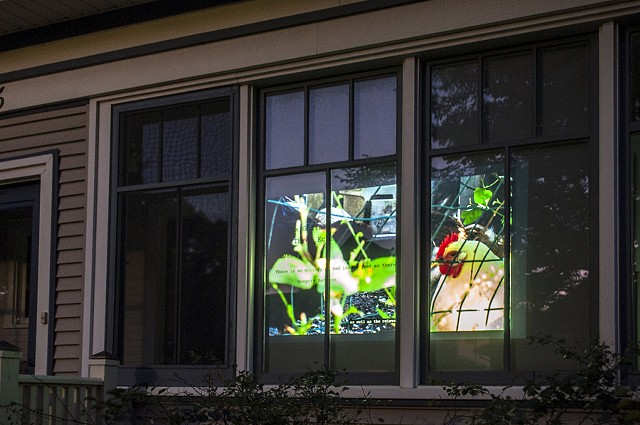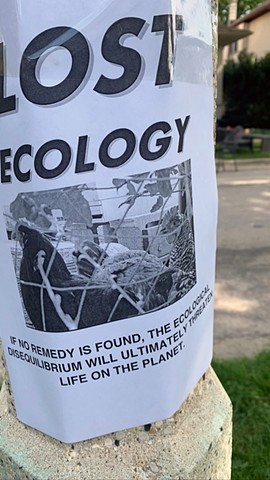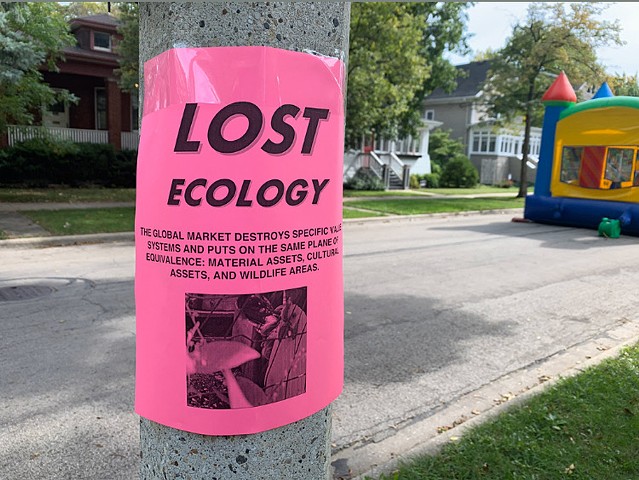Terrain Biennial Extra Projects, Avondale The Franklin, Garfield Park Jennifer Mannebach, Oak Park
You and Me is a large-scale installation in the heart of the Avondale neighborhood using an enlarged form of charm necklace as a symbol of our relationships, promises given to one another, compressed within the scale of architecture.
You and Me is about our promises and wishes of friendships. The work makes obvious our care for one another by embellishing a chain link fence pattern with joyful ornaments in the antagonistic space of a vacant lot in an active neighborhood. How is the scale of friendship, care, and joy measured to our other forms of public life? This work shifts perceptions of a vacant lot in exchange for a vibrant connection. In the spirit of the exhibition, Jacunski uses perceived aggression between the constraints of a non-functioning, vacant lot and then actively shifts psychological structures by layering on it forms and symbols of friendship to explore and assert the importance of a community’s social fabrics.
---------------------------------------------------------------------We are Not Really Strangers plays with a rainbow spectrum of colored plastics attached to a chain-link fence to transform and examine the sheer density of chain fencing on the West Side, an area bifurcated by development and disinvestment. As an architectural material, fences create a psychic mass that is distinct from other parts of the city, acting as an overlay that can sometimes be very tense as citizens contend and participate with every day.
The vibrating, reflective color and material aims to entertain the neighborhood residents who pass by in hopes of giving the unexpected environmental change a sort of release with the moment of visual play that abstracts and reflects the materiality of the street. At the same time, the work probes the social and economic systems that shape communities and issues of class, race, and gender that lie beneath its pattern, mapping out local migrations and economies of our urban life. The work investigates the conditions of new urban landscapes, including the effects of gentrification, renewal, and violence in the city.
Three Ecologies
Jennifer Mannebach's neighbors came to her backyard to record her chickens' coos and clucks and inspired this nighttime projection in the window of her front porch. The window installation uses a text feed from an essay in Felix Guattari’s Three Ecologies. In it, he extends his definition of ecology beyond environmental concerns to include human subjectivity itself and social relations. People become mental ecologists to live in a deeply connected state of creativity and to consider how we work together in a collective struggle against damaging effects on society. The video is of Jennifer's backyard ecology captures her chickens and bees' day-to-day' activity. The video is in conversation with posters that are put up around the neighborhood, searching for lost ecologies like a pet owner looking for their dearly loved companions.
